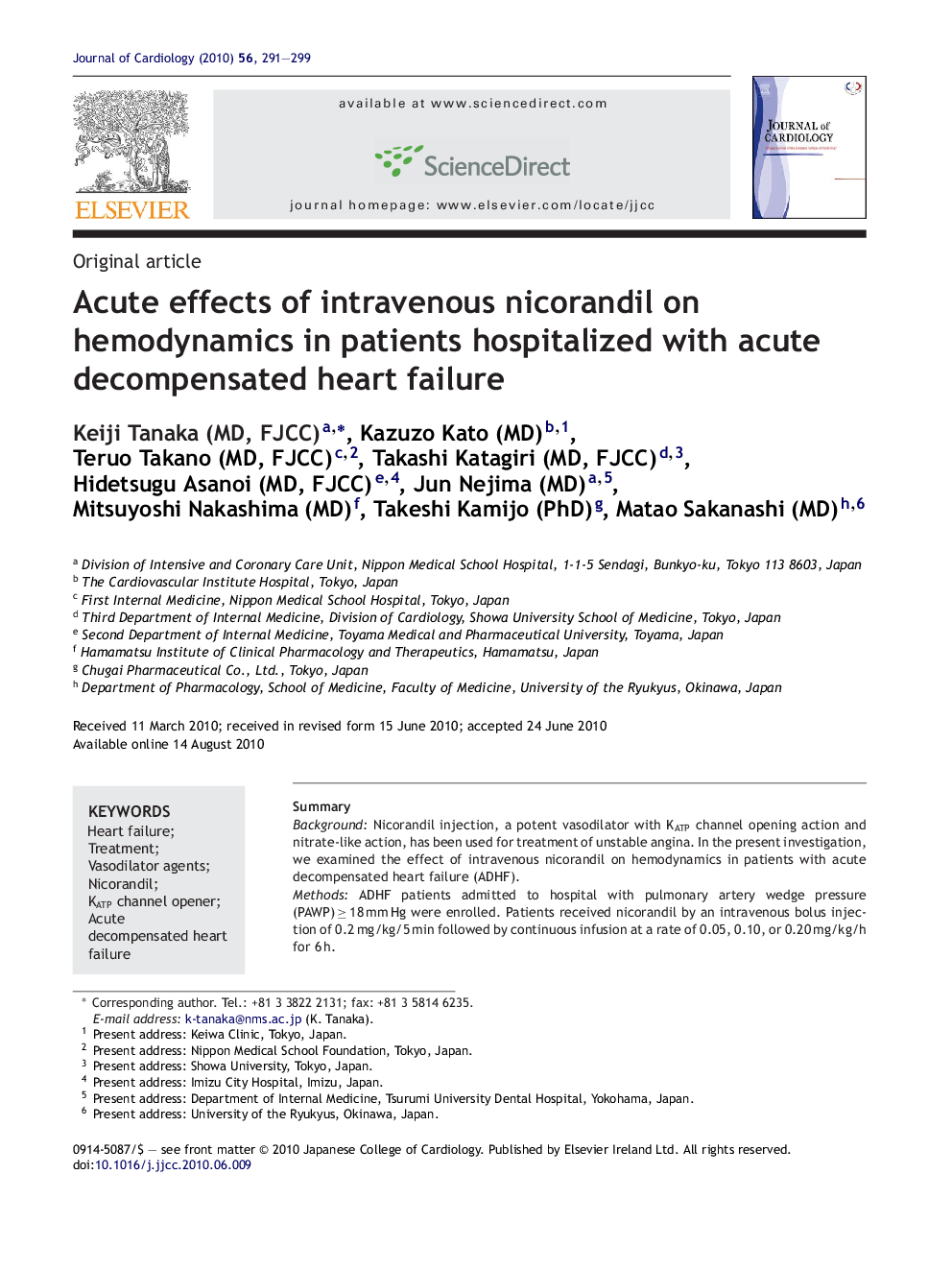| Article ID | Journal | Published Year | Pages | File Type |
|---|---|---|---|---|
| 2963591 | Journal of Cardiology | 2010 | 9 Pages |
SummaryBackgroundNicorandil injection, a potent vasodilator with KATP channel opening action and nitrate-like action, has been used for treatment of unstable angina. In the present investigation, we examined the effect of intravenous nicorandil on hemodynamics in patients with acute decompensated heart failure (ADHF).MethodsADHF patients admitted to hospital with pulmonary artery wedge pressure (PAWP) ≥ 18 mm Hg were enrolled. Patients received nicorandil by an intravenous bolus injection of 0.2 mg/kg/5 min followed by continuous infusion at a rate of 0.05, 0.10, or 0.20 mg/kg/h for 6 h.ResultsNicorandil administration caused a significant decrease in PAWP and increase in the cardiac index (CI) that began immediately after the injection and were maintained during the continuous infusion. After 6 h, nicorandil administration at 0.2 mg/kg/5 min followed by 0.20 mg/kg/h resulted in a decrease in PAWP (26.5%, p < 0.01), an increase in CI (15.8%, p < 0.05), and a decrease in total peripheral resistance (13.8%, p < 0.01) in a dose-dependent manner. Nicorandil decreased blood pressure significantly, without an excessive decrease or negative impact even in patients with lower systolic blood pressure.ConclusionIntravenous administration of nicorandil, by bolus injection followed by continuous infusion, improves PAWP and CI in ADHF patients immediately and continuously as a potent vasodilator with combined preload and afterload reduction. These results demonstrate that nicorandil is a safe and effective new medication for the treatment of ADHF.
